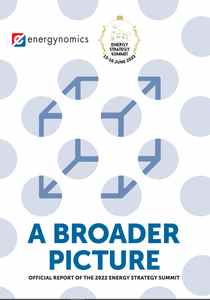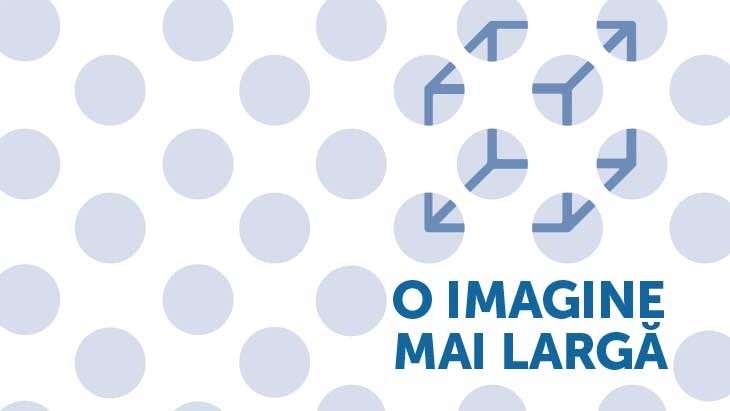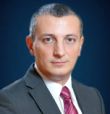We are used to seeing things in certain ways that proved beneficial in the past. When in silos, everything was permanent, or at least standing enough to seem so. Now “the plan is that in the coming years we will replace natural gas with new clean gas and decarbonize those parts of the economy that cannot be electrified”, as Roxana Caliminte put it. “The gas units we will build at CE Oltenia will be hydrogen-ready” (Sorin Alecu, CE Oltenia), and “the ambition is to bring turbine manufacturers to Romania, and to be a hub from which they can export to other EU countries” (Adrian Borotea, RWEA vice-president).
 We gathered, from all energy sectors, at the Energy Strategy Summit 2022 to discuss new value chains, because “Romania has the opportunity to modernize its energy system, to have new production capacities” (Cristian Bușoi). For this, “we must slowly build our reputation as a predictable place where you can trust to do business”, (Bogdan Chirițoiu). This is what Romanian entrepreneurs also want: “legislative stability and predictability – if they exist, they are open to investing” (Florin Pop, EnergoBit). For its part, “the Three Seas Initiative Investment Fund aims to create an infrastructure of new assets in Romania” (Corina Vulpeș), assets that ensure connectivity in the area between the Baltic Sea, the Adriatic Sea and the Black Sea.
We gathered, from all energy sectors, at the Energy Strategy Summit 2022 to discuss new value chains, because “Romania has the opportunity to modernize its energy system, to have new production capacities” (Cristian Bușoi). For this, “we must slowly build our reputation as a predictable place where you can trust to do business”, (Bogdan Chirițoiu). This is what Romanian entrepreneurs also want: “legislative stability and predictability – if they exist, they are open to investing” (Florin Pop, EnergoBit). For its part, “the Three Seas Initiative Investment Fund aims to create an infrastructure of new assets in Romania” (Corina Vulpeș), assets that ensure connectivity in the area between the Baltic Sea, the Adriatic Sea and the Black Sea.
We discovered how the alignment of our particular interests, industries and approaches reveals a new pattern, today – unexpected by most, anticipated by some. A new understanding builds up on the fact that all our interests, industries and approaches are nothing but parts of a broader picture. (“There is no sub-sector more important than the other, there is no key sub-sector”, Silvia Vlăsceanu) Our commonalities are the new focus. Where we meet, that’s where we look for future payoffs. New lines of action emerge as a result of painful changes — slow, almost imperceptible, or sudden, almost incomprehensible — in strategies, positioning, and values. “We will allow hybrid projects” and encourage electricity storage projects, said Zoltan Nagy-Bege, vice president of ANRE. This is because “if we have such ambitious plans on intermittent solutions, we really need storage solutions. At the same time, we need to think about aggregation, partnerships, virtual power plant solutions”, added Zsuzsa Bereschi (Horváth).
“It is very important to be able to accelerate not only investments in renewables but also the whole legislative part”, stressed Sebastian Enache (Monsson Group).
Sustainable, green, ESG, circular – these are some of the keywords that describe this new, broader picture we are beginning to perceive, as individuals and groups. PPAs, hydrogen, power storage, and demand response are a few of the technologies and tools we have identified as stepping stones toward our shared goal – energy to power a safer world for us all, today and tomorrow. “There are insurance solutions and outsourcing of the investor’s risk, in all phases,” explained Ovidiu Trofin (Renomia Gallagher), “whether we are talking about natural phenomena or the operation of wind turbines or components of such a park.” “Nuclearelectrica is a basic pillar for Romania’s energy future” (Cosmin Ghiță), and “the Black Sea represents an opportunity for the national energy system” (George Niculescu), while the Ministry of Energy is preparing a law to regulate offshore wind energy production.
We are moving from one paradigm to another, observed Gabriel Tache (Eaton Romania), from centralized sources to the bidirectional “Everything as a Grid”. The transition from a consumption-based economy to a green economy and a circular economy is now taking place, said Sebastian Staicu (BCR), and “the coming period is becoming increasingly intense in terms of sustainability requirements and reporting” (Mihai Drăghici, EY). In the same vein, Valentin Vasile (Schneider Electric) notes that “energy efficiency and sustainability are becoming essential for companies and investors, as well as potential employees, with ESG scores being watched more closely by everyone”.
However, grasping this new reality is not an easy task. “Investors need specialists, but also a lot of discipline in the execution of projects,” warned Florin Frunză (MET Romania Energy). It is incumbent on politicians, captains of industry and experts to provide the proper top-down approach for faster and wider adoption. “Investors and entrepreneurs in Romania suffer from a lack of coordination”, believes Cristian Pîrvulescu (Enevo Group). “There is no need for a new strategy, just to follow European trends and resources and coordinate better.” The same solution was identified by Cătălin Niță, Executive Director of FPPG: “The energy industry needs more coordination”, but the problem – “lack of a clear strategy” – is felt not only in Romania but at the European level, in his opinion.
Also, a communication platform like Energynomics is meant to provide the opportunities and tools necessary for such an understanding to spread.
It is not just about becoming more accurate in our perception of this rapidly changing environment; rather we must adapt to the different way reality itself is construed and constructed by… ourselves!
“The general outlook of large foreign investors towards investments in Romania’s energy system is positive,” said Radu Mustață (Marsh & McLennan Companies), a position reinforced by Adrian Paraschiv (Photomate): “Romania is on an upward trend in terms of interest in renewable energy, especially in photovoltaics.”
From where we stand, we already have almost everything we need, starting with the fact that we are no longer blind to our blindnesses and continuing with funding, equipment, people, know-how and successful pathways verified elsewhere. “It remains problematic to implement smart grid systems that allow mass adoption of renewables in the grid” (Corneliu Bodea, Adrem), “In the current context, suppliers, who are the main classical co-signatories of projects focused on bilateral power purchase agreements (PPAs) are being strangled in terms of cash-flow”, Oana Mogoi (ING Bank Romania), and “the volatile period that the energy markets are currently going through reveals the impossibility of establishing a fair long-term rate of return on investment”, according to Filimon Antonopoulos (Tallon Commodities).
Developing eyes capable of seeing this new, broader picture is all we need. “Together we will have to build system requirement standards so that this renewable energy can be adequate to the stability requirements of the coupled energy system at the European level,” asked George Vișan, Transelectrica. Solutions exist – let there be projects!”, summarized Florin Pop. “Let’s have the courage, especially us local entrepreneurs, not to wait for everything to be perfect, because during execution everything is dynamic and evolves, and let’s be more confident, we Romanians, about the future of energy in Romania!”

